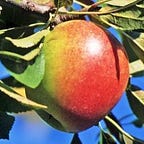$AAPL Home Game Earnings Preview Digest for FQ4 2016 (Part 1): iPhone Commentary
(This is excerpted from my “unapologetically” TL;DR earnings preview. Full link to the 4000+ word post here. Important note + disclaimer here.)
Last 11 fiscal quarters of year-over-year unit growth/decline, GAAP sell-in reporting basis (FQ1 2014 — FQ3 2016): 7%, 17%, 13%, 16%, 46%, 40%, 35%, 22%, 0.42%, -16%, -15%
Year-ago Units and ASP: 48.0M units, $670 ASP
My Horseshoe Toss for FQ4: 47.25M units, $625 ASP
Part I: Intro, Tackling Sellthrough, Units
“Negative 2% unit growth for FQ4, more or less? You’re out of your mind, bro.”
My “thinking” (somewhat bullish by my reckoning, but that’s what makes it fun!) is as follows, starting with the two key management statements.
1) Tim Cook specifically said at the beginning of the FQ3 conference call that the sellthrough compare would turn out better for FQ4 2016 than FQ3.
2) FQ3 sellthrough for iPhone was “over 4 million units” better than the GAAP number, according to Luca Maestri, so on a sellthrough basis, iPhone units were down “about 8%”.
That leaves a much lower starting channel inventory for FQ4. By way of a dash of context, channel inventory was reduced by 600,000 iPhone units in FQ3 2015, though that was a function of continued strong demand reducing Apple’s inventory buffer.
So, to run the math quickly. FQ3 2015 sellthrough was 48.1M units, 600k better than the 47.5M GAAP number. Apple sold 40.4M iPhones in the “year-after” quarter, but the sellthrough number was at least 44.4M iPhones, which represents a 7.7% year-on-year decline.
But…how to get from -7.7% sellthrough to -2% GAAP? Unavoidable leaps must be taken, but at least we can support them with a modicum of logic.
Let’s see if the sellthrough number for FQ4 2015 is of any help. Apple increased channel inventory by “less than” 2 million units for the 6s launch, understandably so considering the extremely short sales window for that FQ4 (one week less than normal). So, subtract, say, 1.7M or so units from the GAAP number, and sellthrough was…hm…46.3M iPhones for the year-ago quarter.
So…uh…did I actually just horseshoe-toss an iPhone sellthrough increase? It’s impossible to say, because I have no idea if Apple will be able to increase channel inventory in support of the iPhone 7 launch. In any case, when all is said and done, starting channel inventory is already quite low, and unit sales are ultimately determined by demand (and production) at the end of the day. Since I think we can assume Apple’s good at making iPhones in mass volumes by now, no matter what certain supply chain rumors might say about Jet Black finish issues or “lack of dual camera assemblies” and so on.
About that demand for the iPhone 7 series, slightly over one month post-launch:
- a quick spot check of non-Jet Black 7 Regular models on apple.com promises delivery by Wednesday (Oct. 26)
- for 7 Plus non-Jet Black, it’s 3–4 weeks
- in China (thanks Google Translate!), it’s pretty much the same for “boring colors” of iPhone 7 Plus, and mostly in stock for non-Jet Black 7 Regulars, so I guess Apple is doomed or something
- in Japan, basically the same story, except non-Jet Black 7 Regulars appear to indicate Apple Store availability by Monday, Oct. 24 (local time in Japan).
All told…looks like demand remains solid, potentially indicating it wasn’t a “flash in the pan” either at launch, or when FQ4 ended on Sep. 24, 2016. So I’ll stick with my 47.25M iPhone unit sales guess, perhaps “counting on” continued strength in the iPhone SE, which, aside from being an actual new-and-improved small iPhone, also launched at the beginning of FQ3 2016, meaning it was still fairly early in the sales curve through September.
Next, a quick guess on ASP.
Part II: ASP
Did iPhone SE impact iPhone ASP? Of course it did.
But so did the 4-million-plus channel inventory drawdown, which, per Maestri, targeted mainly the high end of the iPhone line. In context, a drop in iPhone ASP sequentially from $642 to around $595 for FQ3 2016 actually isn’t that bad.
Now that the inventory levels are probably plenty low enough for Apple’s taste, there shouldn’t be any real GAAP “distortions” now that the $649+ and $769+ iPhone 7 models, which appear to be pretty popular, enter the revenue mix. Additionally, Apple launched iPhone 7/Plus on Sep. 16, in 29 countries (give or take a couple for mis-counting), versus 12 for the 6S-series — and, there were the “usual” nine selling days in FQ4 2016 for iPhone, versus only two for the year-ago quarter. (See also: My iPhone units guess, and, “if 7 Plus was going to be parts-constrained from the beginning, why launch in 29 countries at once like the 7 Regular?”)
So, I’ll keep it simple(r) to save a bit on words. ASP in FQ4 2015 was a lofty $670. Before FQ3 2016, the lowest ASP in the iPhone 6-and-later sales period was $642. If anything, my wild guess of $625 iPhone ASP, adjusting for SE, might be a bit low, unless SE and the new-midrange 6s units are really tearin’ it up in the marketplace…in which case, units will surprise a lot of people. But I’m not gonna call that by any means — let’s just see what’s reported next Tuesday.
— — — — — —
Index:
FQ4 2016 AAPL Earnings Digest, Part 2: iPad
FQ4 2016 AAPL Earnings Digest, Part 3: Mac
FQ4 2016 AAPL Earnings Digest, Part 4: Watch/Other Products
FQ4 2016 AAPL Earnings Digest: Looking Ahead to FQ1 2017 (the big December quarter)
